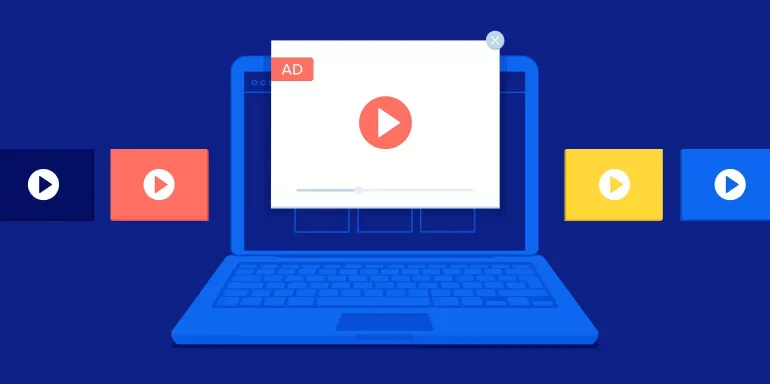In 2012, Google introduced a new expandable ad format. Internal testing found these ads received 6-8x more engagement than previous expandable ads — so in September 2014, the interactive ad format was revamped to run on mobile and desktop. Just a few months later, the ad unit became available to all Google advertisers.
Over the last five years, these rich media ads — known as Lightbox ads — have developed into the perfect solution for any advertiser executing a branding campaign or seeking customer engagement.
Let’s start at the beginning.
What is a Lightbox ad?
Lightbox ads are interactive ads on the Google Display Network (GDN) that aim to quickly capture users’ attention with multiple images, videos, or a combination of both.
Users initially see a small ad which can be expanded by clicking or hovering (for 2 seconds or longer) on desktop, or tapping on mobile and tablet. Next, the screen is dimmed and a ‘light box’ appears on the screen, showing your full ad unit that users can interact with:
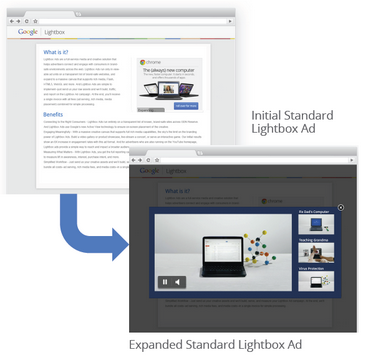
Depending on the format, users can either scroll through images or watch videos — so compared to single, static image ads, the Lightbox format allows for much more engagement from the offset.
They can also choose whether to click through to the corresponding landing page.
Why should advertisers use Lightbox Ads?
In addition to capturing attention better and faster than single image ads, Google Lightbox ads are beneficial for multiple other reasons:
Seamless audience targeting
GDN Lightbox ads target people using all of the traditional Display Network audience solutions and placement options — Interests & remarketing, keywords, demographics, affinity audiences, etc.
Lightbox ads on Google also use an intelligence optimization engine that tailors audiences based on previously collected data. It learns which targeting methods have proven most effective in the past, so the level of audience engagement continues to improve over time.
Revamped, engaging content
With Lightbox ads, you can use existing creative assets to create engaging ads that people can better interact with. You can upload images, or even pull assets from your YouTube videos, Google Maps listings, and Shopping listings to build full-screen experiences on any publisher’s site, mobile app, screen, or device — on both desktop and mobile:
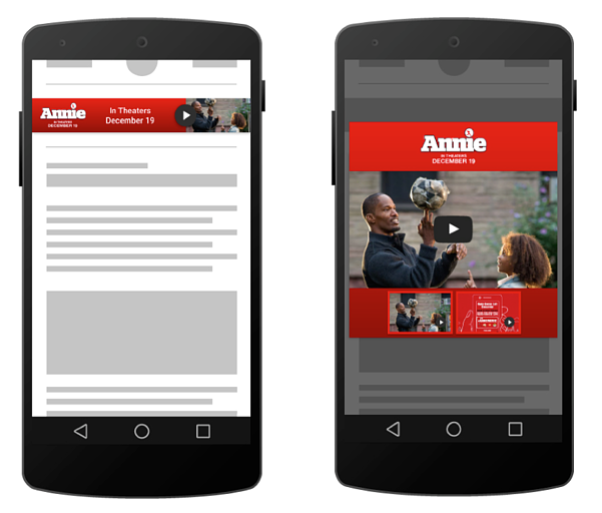
One of the main benefits of GDN Lightbox ads is that they automatically resize to fit all standard IAB (Interactive Advertising Bureau) ad spaces:
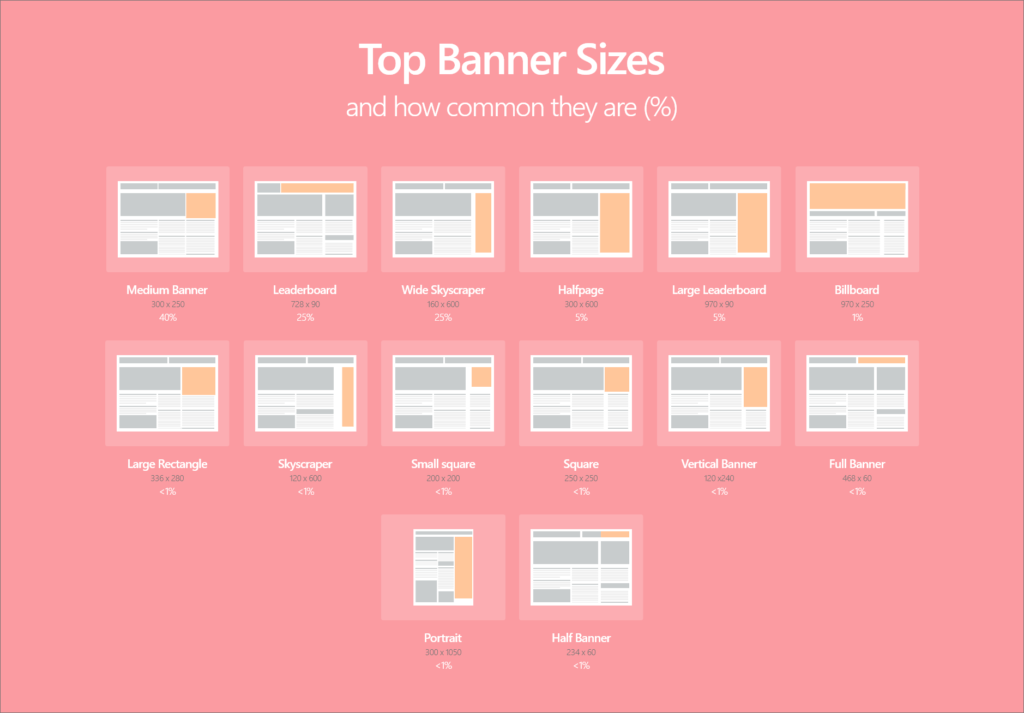
This automatic resizing allows your ads to appear in more locations, helping you reach more of your potential audience.
Dynamic product advertising
Combinations of high-quality images, video, and audio can enhance audience engagement and make a lasting impact when advertising different products.
Sony Electronics successfully used Lightbox image and video ads to advertise a wide array of products, including their 4K Ultra TV, Xperia smartphone, Playstation, soundbar, and more:
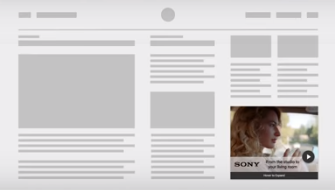
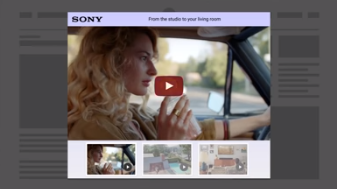
Deborah Gaudette, Senior Vice President at Universal McCann, also had great results with the ad format:
We chose to use Lightbox ads because we needed our content to achieve scale across the web. Our clients spend a lot of time, money and energy creating video assets and making sure they get seen by the most qualified, engaged users is our top priority. Google’s new Lightbox ads help us make sure that happens.
A better user experience
In addition to the benefits for advertisers, Lightbox ads also improve the user experience. By requiring users to click, tap, or hover their mouse over the ad before it expands, it’s designed to minimize accidental expansions.
Self-service vs. Custom Lightbox ads
Self-service Lightbox ads can be built in either Google Ads or Studio.
The Google Ads Ready Ad Gallery offers pre-built display ad templates for advertisers to easily customize based on their marketing objectives and campaign goals:

Studio allows you to build more complex creatives, and can include multiple levels of content in one placement.
In contrast, Custom Lightbox ads are third-party served HTML5 ads fully developed by creative agencies, according to Google Ads specs. This ad format must be hosted in Studio, trafficked from Campaign Manager, and implemented in Google Ads.
The advantage of using Custom Lightbox ads is that there’s more flexibility in the appearance and functionality of the ads compared to Ready Lightbox ads. However, having Custom Lightbox ads created by a third-party is naturally more expensive.
Google Lightbox ads specs
Image assets
Images will appear in both the image gallery and thumbnails. You can build up to 10 image galleries with a maximum of 10 images in each gallery.
Image specifications
- File format: PNG or JPG
- File size: 200KB max
- Image dimension: 1024 x 1050 max
- Resolution: 200+ PPI for high-resolution images
- Aspect ratio: No mandatory ratio, but 16:9 fits on most screen sizes and orientations
Image text
- Descriptive captions, text, and CTAs: May be added to every image
- Maximum length for SBCS languages (such as English, French, Spanish):
- Title: 40 characters
- Text: 100 characters
- CTA: 20 characters
- Maximum length for DBCS languages (such as Chinese, Japanese, Korean):
- Title: 25 characters
- Text: 75 characters
- CTA: 15 characters
- Title: 25 characters
- Video Codec: H.264, MPEG-2, or MPEG-4 preferred
- Audio Codec: MP3 or AAC preferred
- Only accepted for ads made with Google Ads templates
- Recommended max length: 4 minutes
- YouTube annotations and info cards will be visible and actionable on supported browsers
- Lightbox video ads made with Google Ads templates will automatically start playing the first video (without sound) when someone clicks to expand the ad on a device that supports video autoplay (primarily desktop and some tablets).
- Videos will still be click-to-play on expansion on mobile devices.
- The first video will auto-play and additional videos will auto-play when selected.
- If the user switches back to a previous video, that previous video will remain paused until clicked.
- Lightbox video ads will auto-preview in-banner and will play without sound on compatible devices (primarily desktop and some tablets).
- An alternative high-resolution image to show before the video is played and in the background while the video is playing (if you don’t upload a video cover image, the ad will use the video’s default thumbnail image, which may be low-resolution if the video doesn’t have high enough resolution).
- PNG, JPG, or GIF
- 200KB maximum
- 200+ PPI for high-resolution images
- No mandatory aspect ratio, but 16:9 fits on most screen sizes and orientations
- Include a play button so users know they are playable
Video assets
You can add videos to your ad from your YouTube channel, by uploading a video from your computer, or by choosing from recently used videos. Each video requires its own asset card.
Non-YouTube videos
YouTube videos
Auto-play
Auto-preview
Video cover images (optional)
Note: In addition to the above ad specs, there are also basic asset specifications to follow for Lightbox ads created with Google Ads templates, as well as map assets and product assets in some cases.
Bidding on Lightbox ads
In the previous AdWords experience, there were two bidding options for Lightbox ads: viewable cost-per-thousand-impressions (vCPM) and cost-per-engagement (CPE) bidding.
In the new Google Ads experience, however, the only bidding strategy for these ads is CPE. So, advertisers are charged only when the user engages with the ad — hovers on, clicks, or taps to expand the ad and it has been seen for at least 3 seconds.
Naturally, CPE bidding stretches your digital display budget further because you don’t pay if people don’t expand and engage with the creative experience.
Grow customer engagement with Lightbox ads
Lightbox ads provide marketers with countless opportunities for creative campaigns across the Google Display Network. With a wide array of placement and targeting options, these ads make it easier to grow brand awareness, increase customer engagement, and in turn, boost landing page conversions.
Sign up for an Instapage 14-day free trial today.

Try the world's most advanced landing page platform with a risk-free trial.
